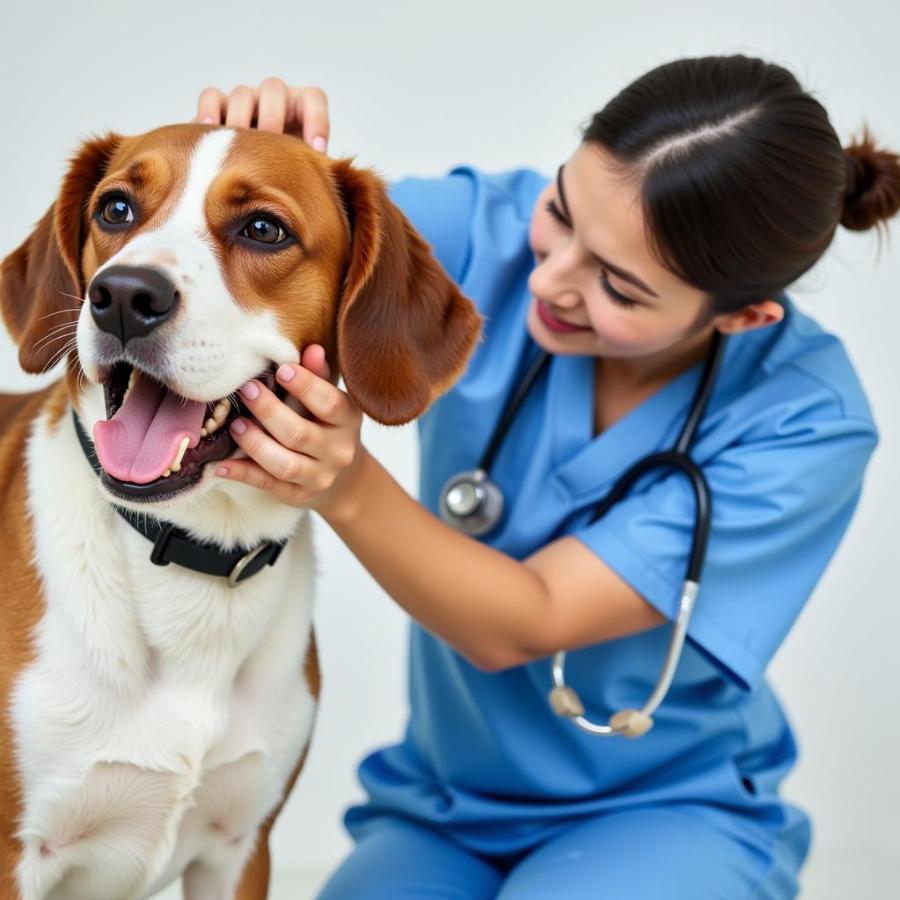Bubble gum. That sweet, chewy treat beloved by many, especially children. But when it comes to our canine companions, bubble gum is anything but a treat. It poses a serious health risk and should be kept far away from our furry friends.
Why is Bubble Gum Dangerous for Dogs?
While blowing bubbles might be fun for us, the ingredients in bubble gum can be downright dangerous for dogs. Here’s why:
- Xylitol: This artificial sweetener, commonly found in sugar-free gum, is extremely toxic to dogs. Even small amounts can cause a rapid release of insulin, leading to a life-threatening drop in blood sugar (hypoglycemia). Symptoms of xylitol poisoning include vomiting, weakness, lethargy, seizures, and even liver failure.
- Aspartame and other artificial sweeteners: While not as acutely toxic as xylitol, these sweeteners can still cause gastrointestinal upset and other health issues in dogs.
- Base ingredients: The chewy base of most bubble gum is indigestible for dogs. It can lead to choking hazards or, if swallowed, create a blockage in their digestive system.
- Additives and flavorings: Artificial colors, flavors, and preservatives in bubble gum can trigger allergic reactions or exacerbate existing health conditions in some dogs.
Signs Your Dog May Have Eaten Bubble Gum
Dogs are curious creatures, and it’s not uncommon for them to ingest things they shouldn’t. If you suspect your dog has eaten bubble gum, look out for these signs:
- Drooling excessively
- Foaming at the mouth
- Vomiting
- Diarrhea
- Lethargy
- Loss of appetite
- Difficulty walking or standing
- Seizures
- Tremors
 Veterinarian examining a dog
Veterinarian examining a dog
If you notice any of these symptoms, especially if you know your dog has ingested bubble gum, contact your veterinarian or an emergency animal hospital immediately.
What to Do if Your Dog Eats Bubble Gum
Time is of the essence if your dog has consumed bubble gum. Here’s what you should do:
- Stay calm but act quickly. Assess the situation and determine how much gum your dog may have eaten.
- Check the gum packaging. Look for xylitol in the ingredients list. If xylitol is present, your dog needs immediate veterinary attention.
- Call your veterinarian or an emergency animal hospital immediately. Be prepared to provide information about the type of gum, the amount ingested, and your dog’s symptoms.
- Follow your veterinarian’s instructions carefully. They may induce vomiting or recommend bringing your dog in for treatment.
Preventing Bubble Gum Mishaps
Prevention is always the best medicine. Here are some tips to keep your dog safe:
- Keep bubble gum out of reach. Store gum in airtight containers in high cupboards or drawers where your dog can’t access it.
- Be mindful of children. Teach children to never give gum to dogs and to dispose of gum wrappers properly.
- Train a strong “leave it” command. This command can be a lifesaver in many situations, including preventing your dog from picking up dropped gum.
- Provide safe chew toys. Offer your dog a variety of appropriate chew toys to keep them entertained and satisfied.
Remember, even a small piece of gum can have serious consequences for your furry friend. By being aware of the risks and taking preventive measures, you can help ensure your dog’s safety and well-being.
FAQs about Dogs and Bubble Gum
Q: Can dogs die from eating bubble gum?
A: Yes, especially if the gum contains xylitol. Xylitol is highly toxic to dogs and can be fatal even in small amounts.
Q: How long does it take for xylitol to affect a dog?
A: Symptoms of xylitol poisoning can appear within 15-30 minutes of ingestion, but sometimes can be delayed for several hours.
Q: What is the treatment for xylitol poisoning in dogs?
A: Treatment depends on the amount ingested and the severity of symptoms. It may include inducing vomiting, administering activated charcoal to absorb the toxin, providing intravenous fluids, and monitoring blood sugar levels.
Q: Are all sugar-free gums dangerous for dogs?
A: Not all sugar-free gums contain xylitol, but many do. It’s crucial to check the ingredients list carefully and avoid any gum containing this sweetener.
Q: My dog ate a small amount of gum, but seems fine. Should I still be concerned?
A: It’s always best to err on the side of caution. If you suspect your dog has eaten any amount of gum, contact your veterinarian for advice.
Need More Information?
For more information on keeping your dog safe from household hazards, check out these articles:
- Bubble Gum and Dogs
- Dogs Foaming at the Mouth
- My Dog is Acting Strange and Shaking
- Dog Foaming at the Mouth
- Dogs in Danger
About Beaut Dogs
Beaut Dogs is your trusted source for all things dog-related. We provide comprehensive and reliable information on dog breeds, care, health, and well-being. If you have any questions or need personalized advice, don’t hesitate to contact us at [email protected].